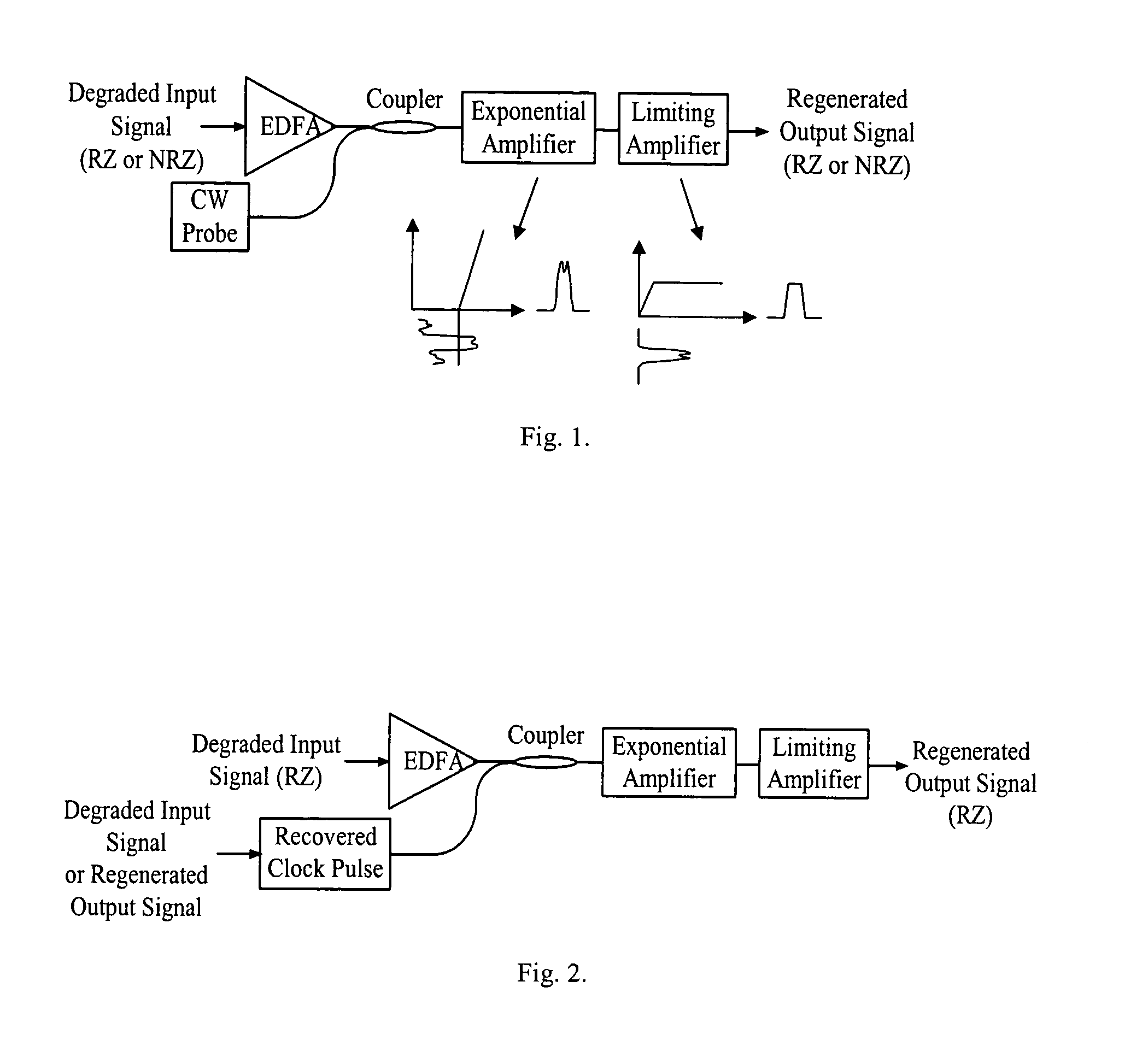All optical regeneration
a technology of all optical regeneration and optical fiber, applied in the field of optical communication systems, can solve the problems of limiting the transmission distance, affecting so as to minimize the error rate and improve the signal extinction ratio
- Summary
- Abstract
- Description
- Claims
- Application Information
AI Technical Summary
Benefits of technology
Problems solved by technology
Method used
Image
Examples
Embodiment Construction
[0041]Before explaining the disclosed embodiments of the present invention in detail it is to be understood that the invention is not limited in its application to the details of the particular arrangements shown since the invention is capable of other embodiments. In addition, the terminology used herein is for the purpose of description and not of limitation.
[0042]With respect to the terminology, a short review is presented hereafter for a better understanding of the preferred embodiments. When used in the context of 3R, the reshaping comprises two sub-functions: enhancement of the extinction ratio and noise reduction for bit 0's as well as bit 1's, which are realized by exponential amplification followed by limiting amplification. This invention lists 3 different combinations for the exponential amplification and the limiting amplification as follows: (a) a piece of fiber (dispersion shifted fiber or photonic crystal fiber) with parametric amplification as an exponential amplifie...
PUM
 Login to View More
Login to View More Abstract
Description
Claims
Application Information
 Login to View More
Login to View More - R&D
- Intellectual Property
- Life Sciences
- Materials
- Tech Scout
- Unparalleled Data Quality
- Higher Quality Content
- 60% Fewer Hallucinations
Browse by: Latest US Patents, China's latest patents, Technical Efficacy Thesaurus, Application Domain, Technology Topic, Popular Technical Reports.
© 2025 PatSnap. All rights reserved.Legal|Privacy policy|Modern Slavery Act Transparency Statement|Sitemap|About US| Contact US: help@patsnap.com



